
Home Side
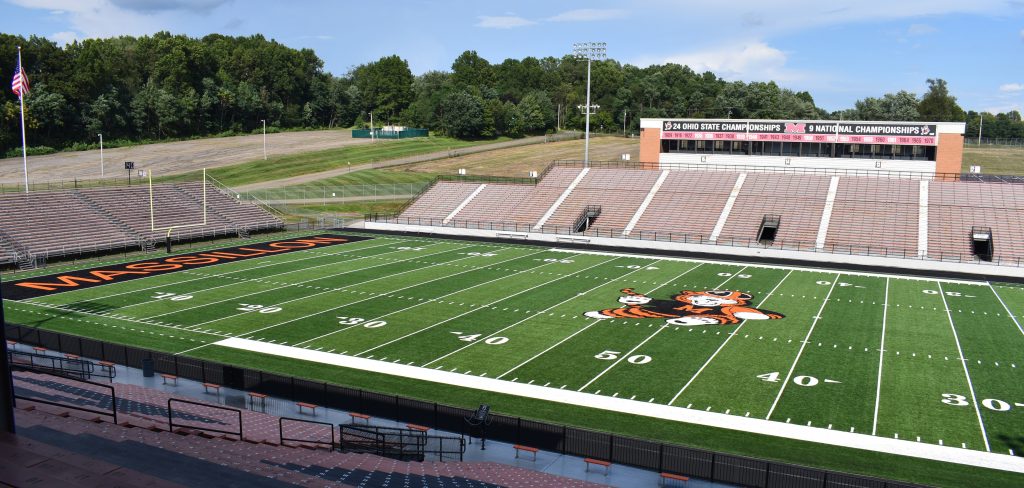
Visitors’ Side

Scoreboard
Football Stadium: Paul Brown Tiger Stadium; originally named Tiger Stadium; constructed in 1938-1939 as a Works Project Administration (WPA) Project under President Franklin Roosevelt; cost: $246,000; named after former Massillon, Ohio State, Cleveland Browns and Cincinnati Bengals Head Coach Paul Brown, located at the high school; listed as a historical site of significance by the State of Ohio. Designed by Herman J. Albrecht. Largest high school football stadium in the country at that time. Honored as a national historic site.
Stadium Name: Originally “Tiger Stadium.” Renamed “Paul Brown Tiger Stadium” in 1976.
Playing Surface: Field turf, north-to-south orientation
Stadium Capacity: 16,884 (prior to 1981: 21,345)
Stadium Seating: Closed fiberglass bleachers on home and visitors’ sides; open aluminum bleachers in endzones; handicap accessible seating
Features: Locker rooms on home side; press box on home side for TV/radio and coaching spotters; loge box on visitors’ side for VIPs/media and meeting room; roof covering part of home side; unobstructed field lighting; state-of-the-art scoreboard and sound system; ample on-site parking
Amenities: Restrooms and food concessions on each side; souvenir stand on home side
Events: All Massillon Tiger football games; OHSAA football playoffs; Ohio High School North-South All-Star Football Game; Massillon Tiger soccer games; Tiger Swing Band Review.
First Game Played: Massillon vs. Cleveland Cathedral Latin; September 15, 1939; Coach: Paul Brown; Score: 40-13.
First Touchdown Scored at Tiger Stadium: Tommy James, HB, 39-yard run; vs. Cleveland Cathedral Latin; September 15, 1939
Stadium History and Improvements:
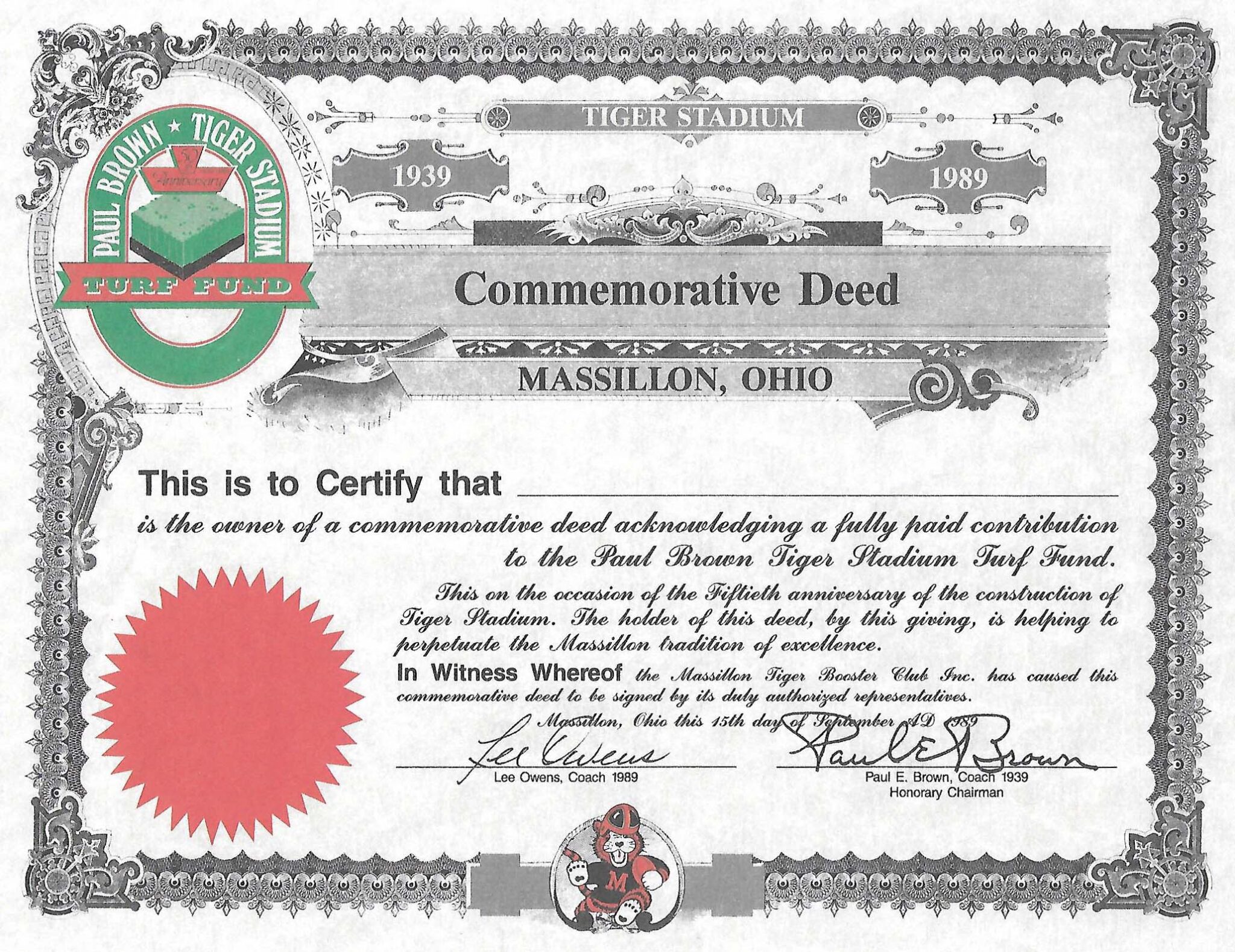 1939 – Construction completed; dedicated on September 15, 1939, as “Tiger Stadium”
1939 – Construction completed; dedicated on September 15, 1939, as “Tiger Stadium”- 1955 – Installation of new lights
- 1955 – Replacement of all brick in west stands
- 1967 – Installation of new scoreboard
- 1968 – Installation of plastic seat covers
- 1976 – Renamed “Paul Brown Tiger Stadium” in honor of the former legendary coach
- 1977 – Installation of new lights
- 1979 – Attachment of message-gram to scoreboard
- 1980 – Installation of asphalt track and fence surrounding field
- 1980 – Reinforcement of west stands
- 1981 – Renovation of all stands and installation of permanent end zone seats
- 1982 – Installation of new scoreboard
- 1983 – Installation of new scoreboard with enlarged message-gram
- 1989 – Installation of “Omni-Sand Turf”1989 – Installation of new lights
- 1989 – Installation of new sound system
- 1990 – Construction of east side press box, restrooms, conference room, meeting room and maintenance facilities
- 1990 – Installation of new concession stand on east side
- 1992 – Installation of new scoreboard and message center
- 1993 – Purchase of inflatable tunnel for player pre-game field entry
- 1994 – Renovation of the locker rooms
- 1997 – Added parking on the north side of the stadium
- 2002 – Installation of the Tiger Walk and Paul Brown statue
- 2005 – Installation of new scoreboard
- 2008 – Construction of Paul L. David Athletic Training Center
- 2009 – Purchase of inflatable tiger-head tunnel for player pre-game field entry
- 2018 – Installation of new scoreboard / video board
- 2019 – Replacement of playing surface
- 2020 – Replacement of seat benches on both home and away sides
Previous Facilities

North Street Field (1906-1914)
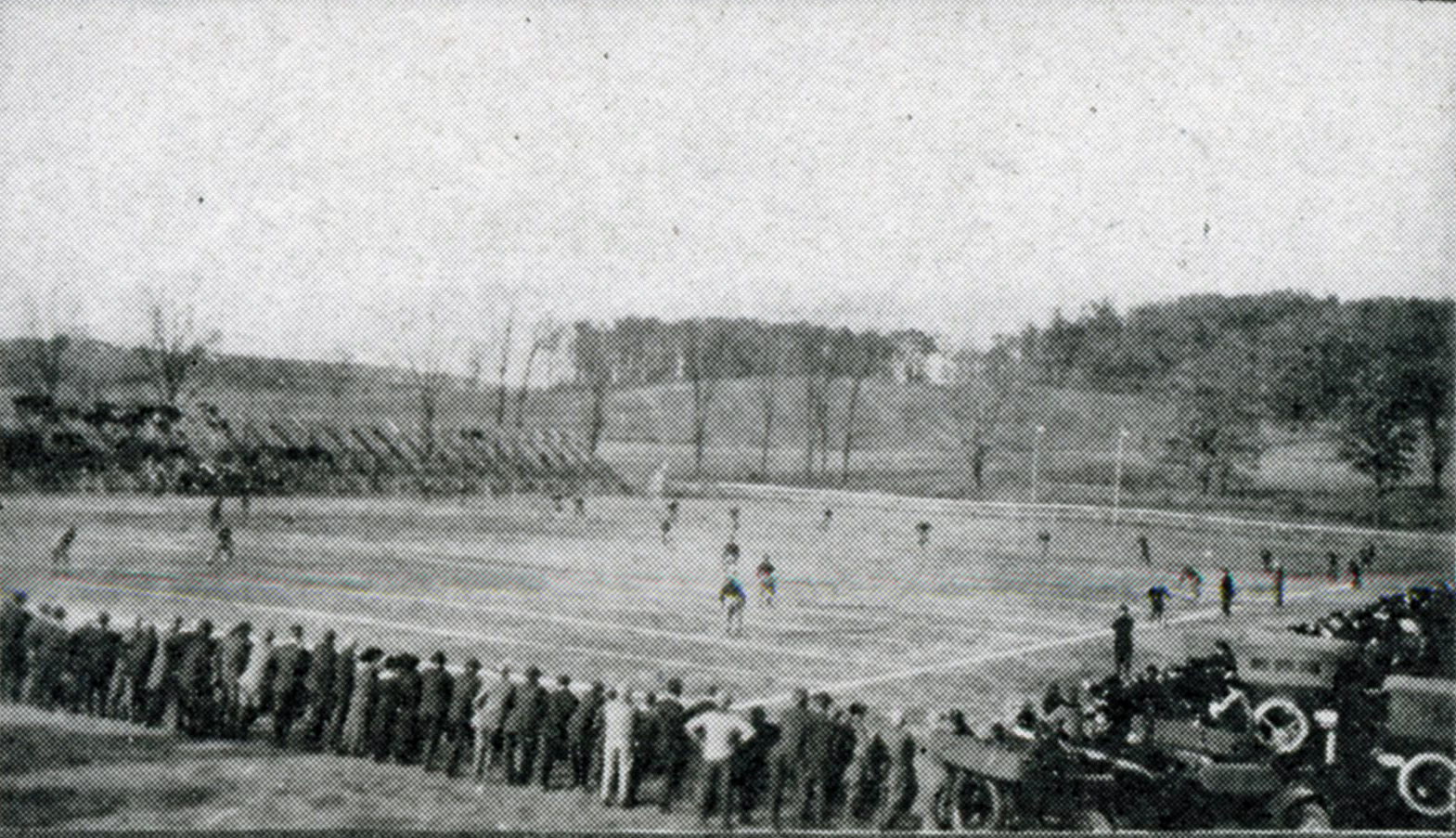
Erie Street Field / Driving Park (1914-1916
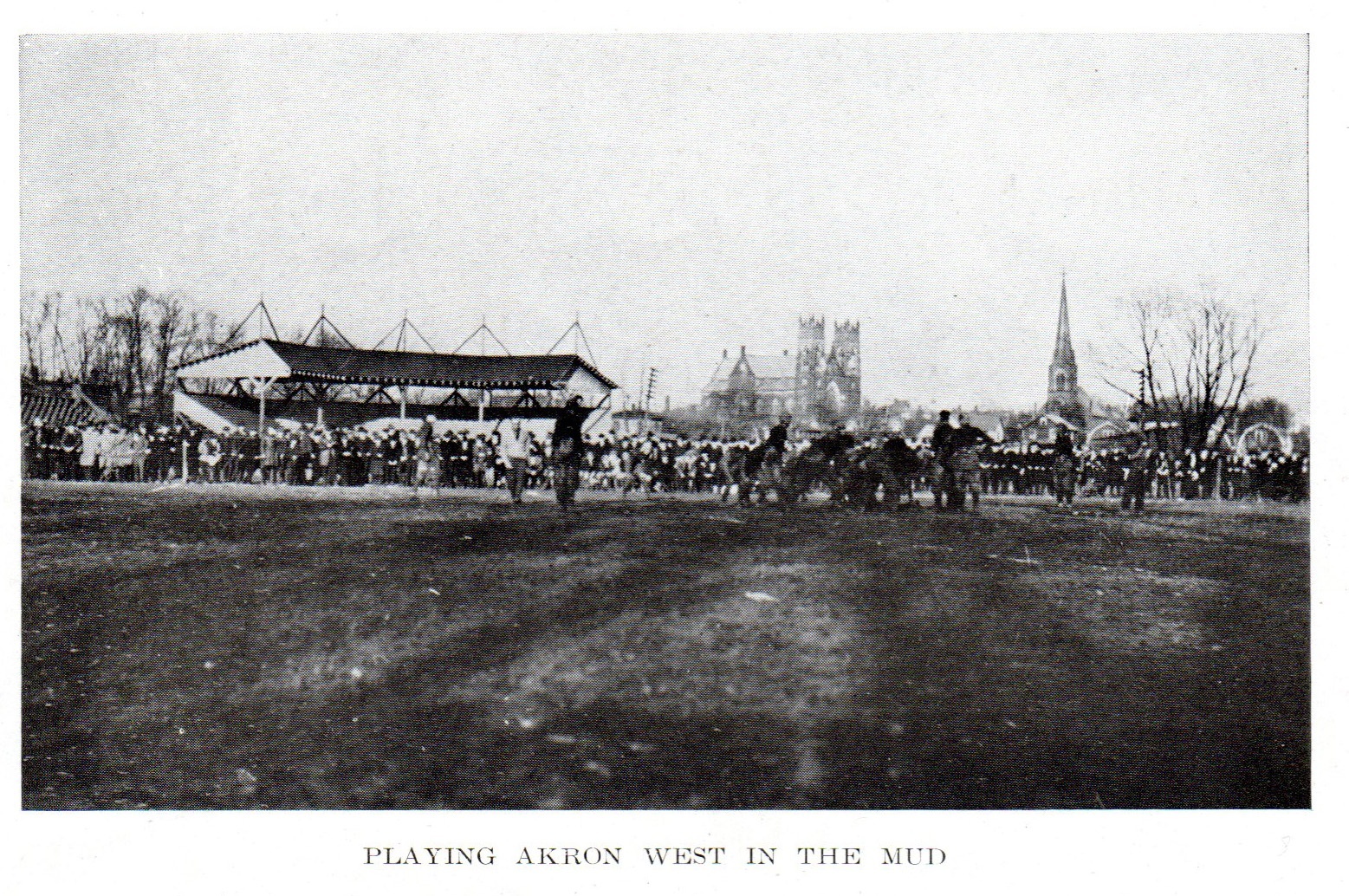
Central Street Athletic Field / Agathon (1917-1920)

Pearl Street Field / Shriver Park (1921-1923)

Massillon Field (1924-1938)
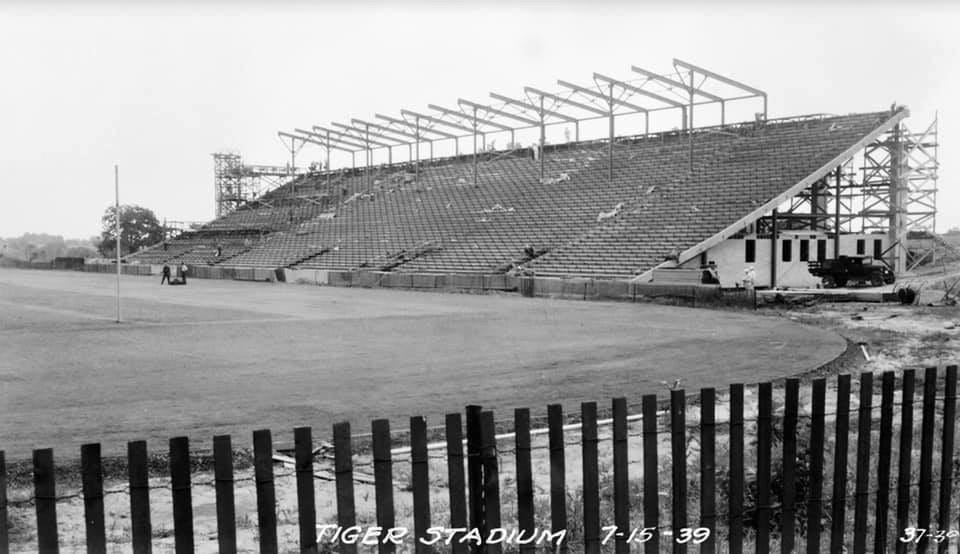
Tiger Stadium Under Construction (1939)
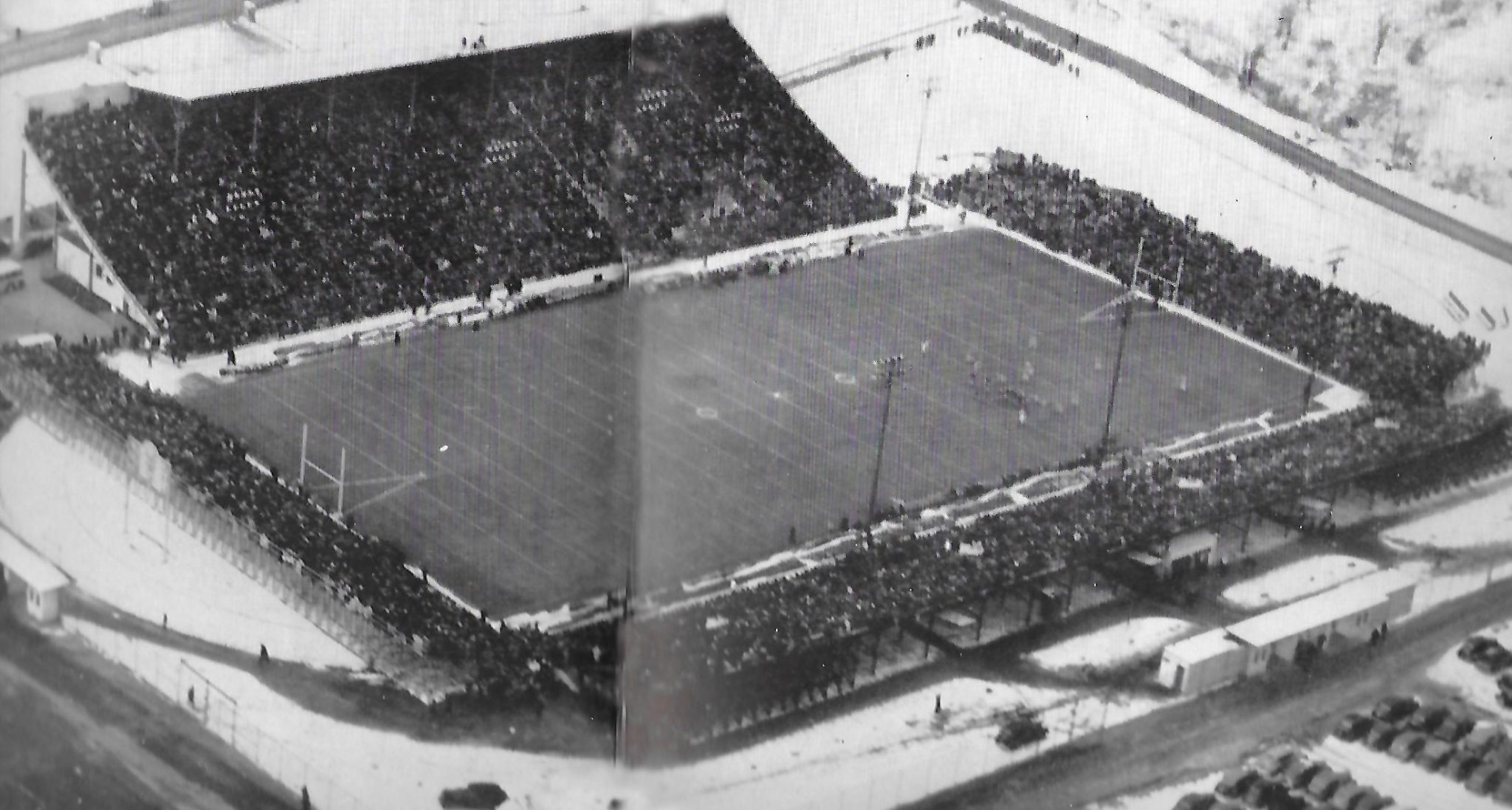
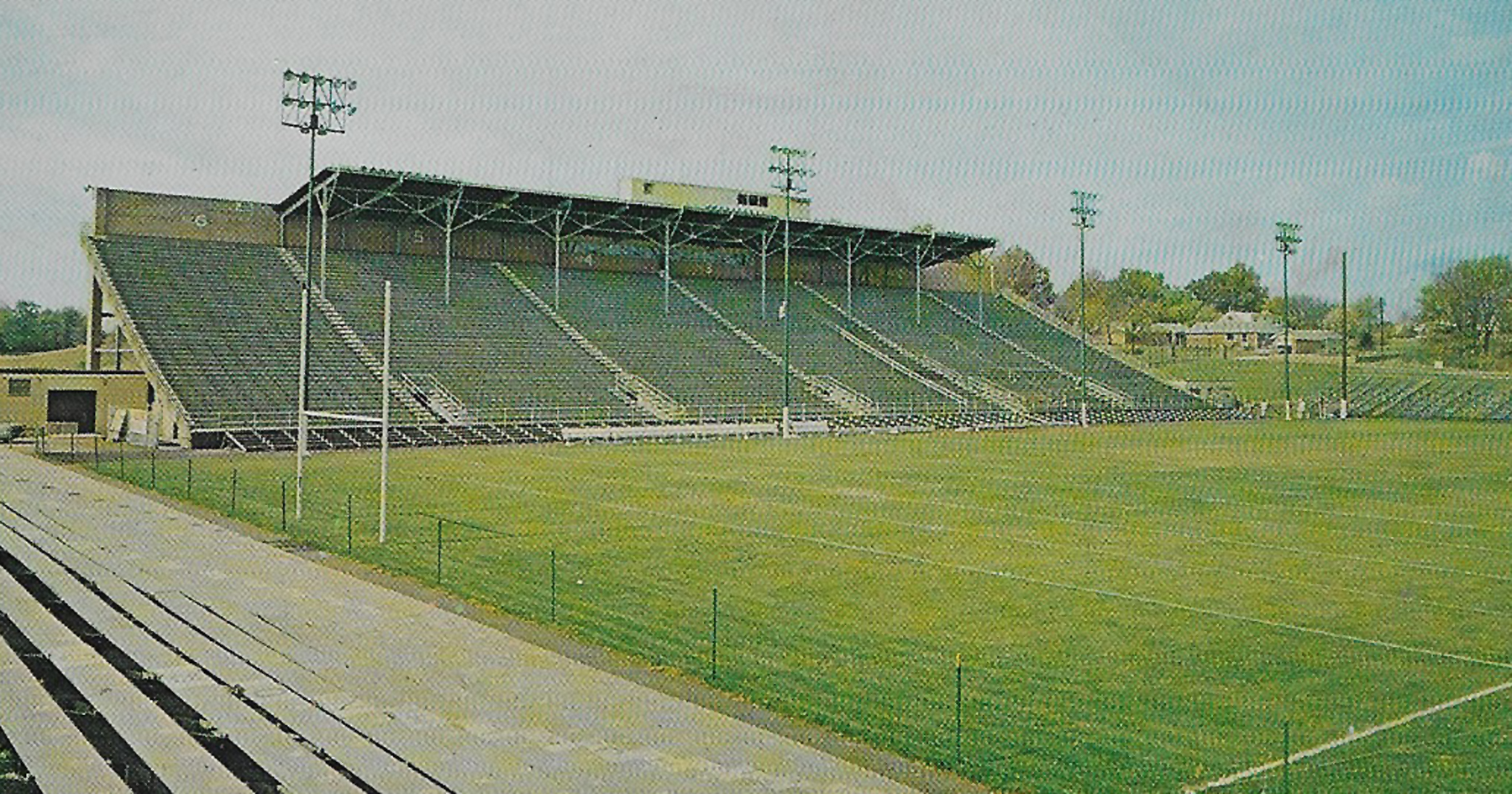 Tiger Stadium (circa 1960s; grass field, light poles in front of stands, wooden seat benches, temporary end zone and sideline bleachers, duo-pole goal post, running track, capacity 21,345)
Tiger Stadium (circa 1960s; grass field, light poles in front of stands, wooden seat benches, temporary end zone and sideline bleachers, duo-pole goal post, running track, capacity 21,345)